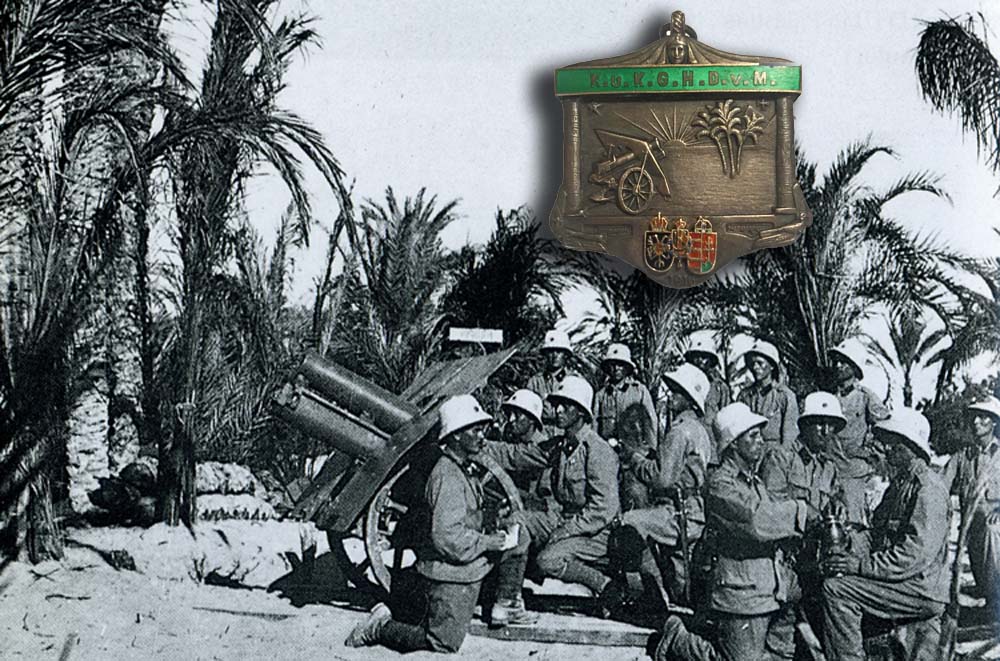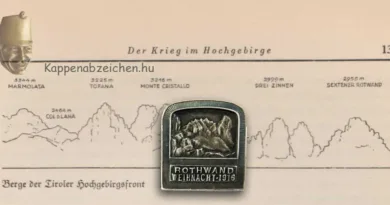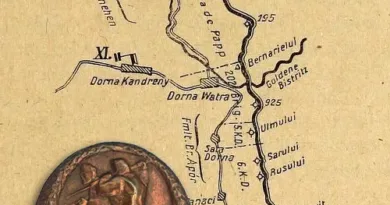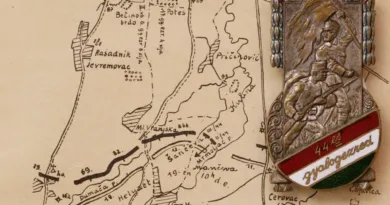The von Marno Howitzer Division on the Turkish front
At first glance, this badge is very remarkable. Palm trees, arabesque columns, crescent moon, and an Egyptian-looking head. Then, when you get a little immersed in the subject, the riddles dissolve. For example, the acronym of the Kappenabzeichen is Gebrigs-Haubitz Division v. Marno. That is, the von Marno Mountain Howitzer Division. A mountain artillery regiment’s howitzer division consisted of two batteries, each equipped with four guns. This was complemented by two more mountain cannon batteries at the regiment level, the other division of the regiment. The question is, why aren’t there mountain cannons here, just howitzers? It is also a question why mountain howitzers, why are not “normal” howitzers, cannons used in the desert terrain pictured?
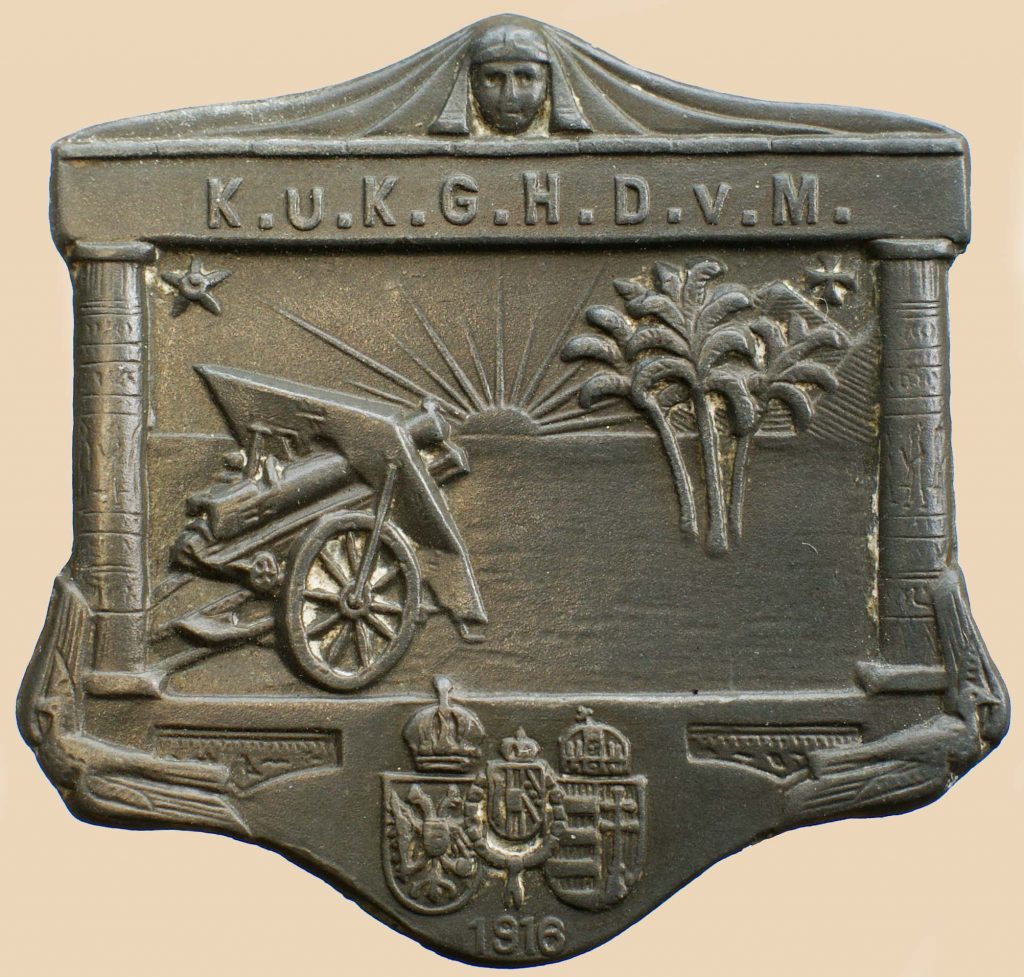
Details of the history of the v. Marno Mountain Howitzer Division can be found in Austrian sources. Turkey was, in terms of military equipment, a failure beyond any imagination. It did not have its own artillery production, it was equipped with German and Austro-Hungarian guns with a very small number of artillery. Therefore, Enver Pasha urgently requested reinforcements from the Central Powers when Turkey entered the war on their side. For some reasons, he preferred the Monarchy over the Germans. Thus, at Gallipoli, an Austro-Hungarian 24 cm heavy howitzer battery formed the Turkish heavy artillery (although it was deployed only in the last days, before the evacuation of British posts). This battery later protected the city and port of Smirna.
The Marno artillery division was set up during this period (late 1916), from the batteries of the 4th (Budapest) and the 6th (Kassa) Mountain Artillery Regiments one battery from each. At the parade before their departure, Kaiser Franz Joseph said, “Na, die sehen wir nimmer!” – “Well, we won’t see them again!” He put the unit on a loss list in the first glance. In comparison, they fought hard, survived, and although the unit suffered heavy losses, many returned home. Immediately after their arrival, they were deployed in the second Turkish attack on Suez. The attack failed, but the division played a prominent role in keeping the counter-attacking British away from the retreating Turkish infantry. They were then stationed in the Gaza area for an extended period of time, where they gained merit in fending off British attacks.
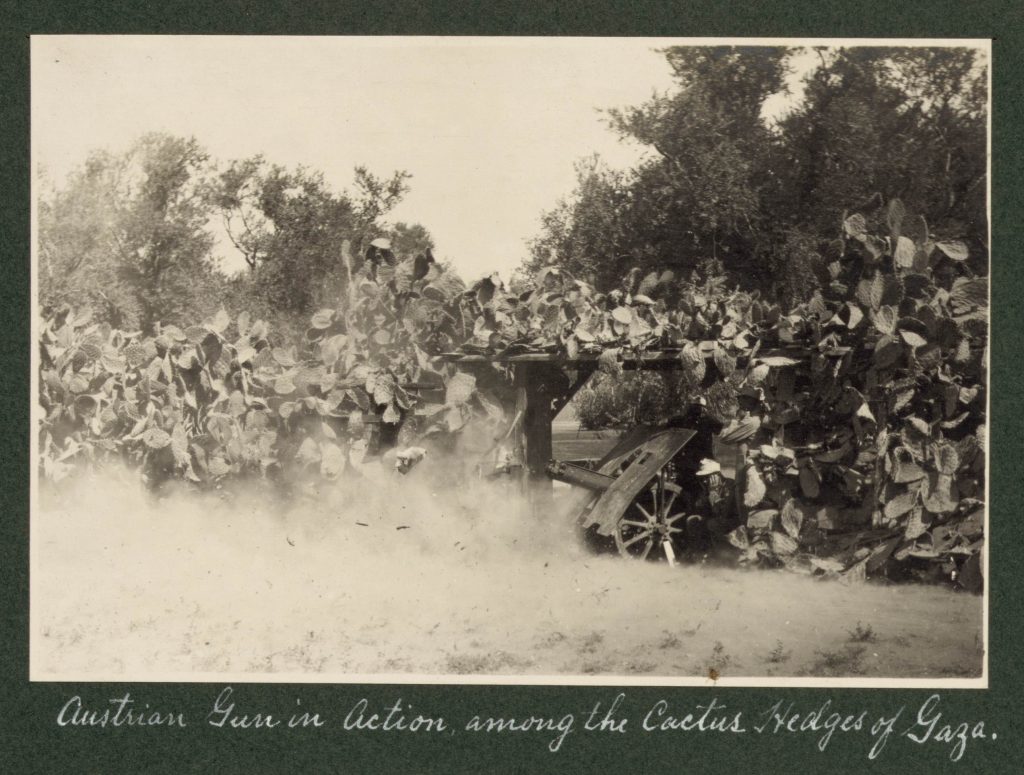
The howitzer division suffered the greatest loss during the defense battles near Gaza. Shortly before the first British attack, Major von Marno was transferred to the Italian front, and the command was entrusted to Captain Wladislaus Anton Ritter von Truszkowski, who had previously commanded the 2/6 Kassa Battery. In March 1917, British troops, previously entrusted with the protection of the Suez zone, launched an attack. The division took up positions in Gaza’s foreground on March 18. The fire control point was on top of Ali Muntar hill above Gaza. On 26 March, the British overran the 2/6 battery at the foot of the mountain and made it to the command post on the hilltop. Von Truszkowski died in close combat there. At night, the unclear situation caused the British to withdraw. They didn’t take the looted guns with them either. So the remaining crew of the battery recovered them during the night. The next day, the British were pushed off the hill too, leaving back the bodies of the comrades who had fallen there. The cropses were buried in Gaza city. Later the body of von Truszkowski who was highest ranked Austro-Hungarian officer of the frontline was resurrected and buried with military parade in a French monastery on the hill of Sion in Jerusalem.
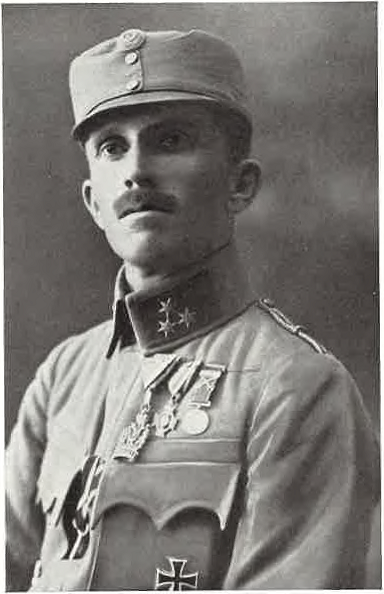
Driven by the British pressure, the division had to retreat to Palestine. In the autumn offensive of 1918, the British broke through the front line and through air raids they decimated the forces that flowed back. In this hasty retreat the unit suffered the most severe loss when some of the guns fell into a ravine in a mountain strait. At the end of the war, the Austro-Hungarian military contingent returned to the mother land, or more precisely, to the successor states established on the territory of the Monarchy.
The badge was apparently made for or near the 1916 deployment. This is indicated by the columns of the two sides, the Egyptian head on top and the pyramids on the right. These are motifs that symbolize the purpose of the Suez attack.

